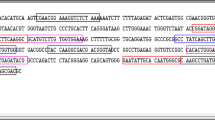Abstract
The objective was to detect nucleic acids ofM. leprae in skin lesions of leprosy patients and study the effect of treatment on these nucleic acids, using r-RNA gene probes, using a cross sectional study. The study was carried out at Department of Paediatrics, S.N. Medical College, Agra and Department of Microbiology, Central JALMA Institute for leprosy, Agra. The study included 32 cases of leprosy less than 16 years of age, divided into 3 groups viz. without treatment (12 cases), in middle of treatment (11 cases) and at the end of treatment (9 cases). All cases were subjected to a detailed history and thorough clinical examination. All of them had smear examination and lepromin test done and their skin biopsies were subjected to gene detection. Nucleic acids were isolated from skin biopsies of all cases by standard procedure. After dot blotting of these nucleic acids, they were hybridised with radioacitive (p32) r-RNA probes. The results were interpreted after getting the X-ray films processed with background signals from controls. Majority of cases were between 13–16 years of age. As age advanced, the disease moved from tuberculoid end of spectrum towards lepromatous end (p<0.05). Majority of paucibacillary (PB) cases were lepromin positive while majority of multibacillary (MB) cases were lepromin negative (p<0.05). In specimens of untreated cases, 50% of PB specimens and 87.5% of MB specimens were positive for r-RNA probes. In multibacillary type 100% smear positive specimens and 67% smear negative specimens were positive for r-RNA probes. In patients during the middle of treatment positivity for r-RNA decreased and 20% of PB specimens and 16.6% MB specimens were positive. At the end of treatment (1 year for PB cases and 2 years for MB cases), the results of r-RNA were negative, which indicated that the treatment regimens used in the study were effective. This study supports the usefulness of r-RNA probes as a diagnostic and therapeutic tool in childhood leprosy.
Similar content being viewed by others
References
Noordeen SK. Elimination of leprosy, a public health problem.Indian J Lepr 1994; 66: 1–10.
National Leprosy Control Programmes in Uttar Pradesh—Report of State Health Education Bureau, Directorate of Medical and Health Services, Uttar Pradesh, 1987; 1–2.
Katoch VM. Recent advances in the development and epidemiology of leprosy.Indian J Lepr 1991a; 63: 362–370.
Katoch VM. Ribosomal RNA and r-RNA gene(s)-based probes for diagnosis and epidemiology of infectious disease. In:Perspectives in Immunology and Reproduction, SK Gupta, Ed. Oxford/IBH. New. Delhi. 1991b; 457–462.
Katoch VM, Kanaujia GV, Shivannavar CT, Sharma VD and Katoch K. RNA gene based probes for early diagnosis and epidemiology of leprosy.Quad Di Co-operaz Sanitar Health Cooper papers, 1992; 12: 175–178.
Katoch VM, Kanaujia GV, Shivannavar CTet al. Progress in developing ribosomal r-RNA gene (s) based probes for diagnosis and epidemiology of infectious disease specially leprosy. In:Tropical Diseases: Molecular Biology and Control Strategies. Sushil Kumar, AK Sen, GP Dutta and RN Sharma (eds), A CSIR Publication, New Delhi, 1994; 581–587.
Dayal R, Agrawal PK, Kalra K, Bhardwaj VP, Katoch VM and Katoch K. Diagnostic value of gene probes and its correlation with clinical profile of leprosy in children.Indian Pediatr 1994; 31: 1521–1527.
Katoch K, Ramanathan U, Natrajan M,et al. Relapses in paucibacillary patients after treatment with three short term regimens containing Rifampicin.Int. J Lepr 1989a; 57: 458–464.
Katoch K, Ramu G, Ramanathan Uet al. Results of a modified WHO regimen in highly bacilliferous BL/LL patients.Int J Lepr 1989b; 57: 451–457.
Katoch VM, Katoch K, Shivannavar CT,et al. Development of improved techniques for extraction of nucleic acids from leprosy lesions. 14th Int Lepr Congr Orlando, U.S.A.Int J Lepr 1993; 61: 114A-M139.
Maniatis T, Fritsch EF and Sambrook P.Molecular Cloning—A Laboratory Manual, Gold Spring Harbour Lab. Cold Spring Harbour, New York 1982; 10–15.
Noussitou FM, Sansarricq H and Walter J.Leprosy in children. WHO Geneva, Switzerland. 1976.
Ganapati R, Parikh AC and Sane AB. Prevalence of leprosy among children in greater Bombay.Paed Clin India, 1971; 6: 13–17.
Ganpati R. Leprosy endemicity in Bombay: An assessment through survey of municipal schools.Lepr Rev 1976 47: 127–131.
Dayal R, Palwal AK and Prasad R. A clinicobacteriological profile of leprosy in children.Indian Pediatr 1989; 26: 122–128.
Nakajo S. Primary leprosy in newborn.Jap J Lepr 1914; 14: 1026–1034.
Ramu G. Adult type of lepromatous leprosy in a child of 6 months.Indian J Child Health 1959; 313.
Girdhar BK. Girdhar A. Ramu G and Desikan KV. Borderline leprosy in an infant.Lepr India 1983; 55: 333–337.
Dave MS and Agrawal SK. Prevalence of leprosy in children of leprosy parents.Lepr India 1984; 56: 615–621.
Koticha KK. Case detection through school survey in Bombay.Lepr India 1976; 48: 819–824.
Sehgal VN, Rage VL and Reys MF and Reys M. The prevalence and pattern of leprosy in a school survey.Int J Lepr 1977; 45: 360–363.
Revankar CR, Dewankar PR, Singh M and Ganapati R. Leprosy in preschool age.Lepr Rev 1979; 50: 293–296.
Bhawsar BS and Metha NR. An epidemiological study of leprosy through school survey in Surat, Gujarat.Lep India 1980; 52: 548–556.
Leprosy (Hansen Disease). In:Nelson Textbook of Pediatrics. 15th edn. Bernman RE, Kliegman RM, Arvin AM, Nelson WE. (eds.) Prism Book Pvt. Ltd., Banlgore, 1996; 849–852.
Jopling WH.Hand Book of leprosy. William Heinemann Medical Books Ltd., London. 1984; pp 40–45.
Katoch VM. Microbiological aspects of relpase in leprosy.Indian J Lepr 1995; 67: 85–98.
Sharma RK. Characterisation of microbial organisms of leprosy lesions specially with reference to application of genomic probes. Ph. D. Thesis, 1995, Agra University, Agra.
Sharma RK, Katoch K, Shivannavar CT,et al. Detection ofM. leprae by gene amplification improved sensitivity with combined ethidium-bromide staining and probe hybridization.Int J Lepr 1996; 64: 409–416.
Author information
Authors and Affiliations
Rights and permissions
About this article
Cite this article
Dayal, R., Gupta, R., Mathur, P.P. et al. Study of gene probes in childhood leprosy. Indian J Pediatr 65, 99–105 (1998). https://doi.org/10.1007/BF02849700
Issue Date:
DOI: https://doi.org/10.1007/BF02849700




